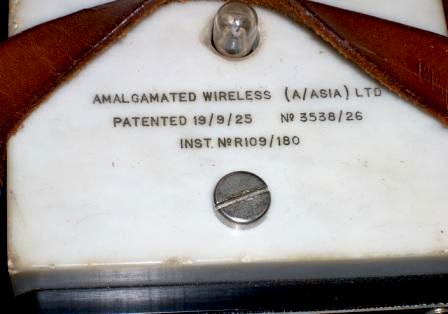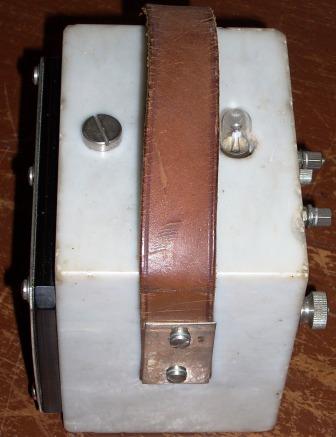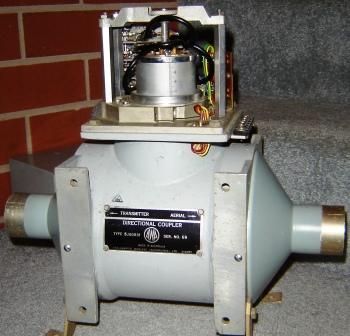around 1924 and continued production for half a century.
AWA Broadcast Studio Equipment
This type of microphone is made of marble, partly filled with very fine carbon granules and uses a mica diaphram. The light on top appears to be an optional extra for indicating when it is alive.
The owner of the unit told me that it capable of picking up speech up to 3 metres away. I measured the marble block as; Width, 104 mm, height 101 mm, depth 76 mm. Powerhouse Museum have another, serial no. 90, used at the opening of the Sydney Harbour Bridge. :They also say that it is believed that AWA made less than 100 units. Ref. Powerhouse Museum web site accessed 18 Aug 2008. They have now been advised of the 2 Geelong units with the higher serial nos.
 | |

Above; AWA Reiss Microphone Top view
Kingsford Smith and Charles Ulm are shown talking into one of these just |  |
 | AWA 44 Ribbon Microphone, formerly from 2GB, now at Kurrajong Radio Museum. Photo kindly provided by Ian O'Toole. |

| Broadcast Consolette BAC-1 Type 2G61226 (top)
The design of this unit originates from the early 1960s. The top unit was installed in 3DB studio at the rear of the former Herald Sun Newspaper building in Flinders Lane, Melbourne. I visited the studios in about 1966. The lower unit is on display at the Kurrajong Radio Museum, Blue Mountains. Photos used with kind permission of Mr David Stuart. |
This battery powered unit originally had provision for 2 microphone channels. It has a compression amplifier. They were used at sporting grounds and other remote venues. It interfaces with a landline ie glorified telephone line. This particular unit has been modified with |  |
 | Model G58250 Photo courtesy of Mat Robins |
Other AWA Broadcast Equipment
This unit dates from early to mid 1950's. Unit courtesy 3YB, but had not been used for several decades. |  |
 |
This unit dates from early to mid 1950's; John, from former 3GL, allowed me to rescue it from dumpmaster bin. |
This unit kindly made available by Mr L. Blasco |  |
Valve technology. At least three of these are used in Melbourne The first one of these that I saw was at 3SR Shepparton in the summer 1968. That transmitter site was built in 1956. It was all AWA, even the antenna tuning box. There is also one next to the AWA BTM-P5 at Mildura. |
 |
 |
1975 design, 6 transistors and 2 I.C.s. |
This unit, made about 1970, was unloved, except by a mouse This particular unit fed the 2.5 kW AWA BTM-2 transmitter above.
It uses a FET for gain control along with a transistor amplifier. | 
The unit above is a common recent adaption of the Big-1 to stereo |

| AWA and Low Distortion Oscillator is on top, matching Noise and Distortion meter below. There still are many of these in commercial use. .
The lower unit G231 is not called "low distortion" but |
Used for checking audio line voltages. Unit from C of A, Cavan Rd, Gepps Cross.Thanks to purchaser of site, Alf Brown |  AWA Gain Measuring Attenuator |
 | It uses 2 Current Transformers and a voltage detector and This apparatus was required for proof of power checks by the ABCB. |
 | AWA Directional Coupler Type 5J60831 shown with cover removed.
A Directional Coupler is the pick-up head of an SWR measurement system.
The unit has an adjustable pick-up that can be raised or lowered (see the calibrations on the cylinder). Kindly donated by Ken VK3YXC. |



